The Welsh Corgi Pembroke is an amazing dog, a favorite breed of Her Majesty Queen Elizabeth II of Great Britain, a small shepherd dog with a big and fearless heart.
The Pembroke Welsh Corgi is a large dog in a small body. This characteristic is most often heard from the owners of these dogs. It’s amazing how such a medium-sized animal contains so much love, cheerfulness, sociability, and devotion to man. And in terms of intelligence and intuition, the corgi will give odds to many recognized human assistants from among large service dogs. Excellent character, amazing artistic ability, charming appearance allowed the representatives of the breed to win love in many countries of the world. It is becoming more and more popular with us.
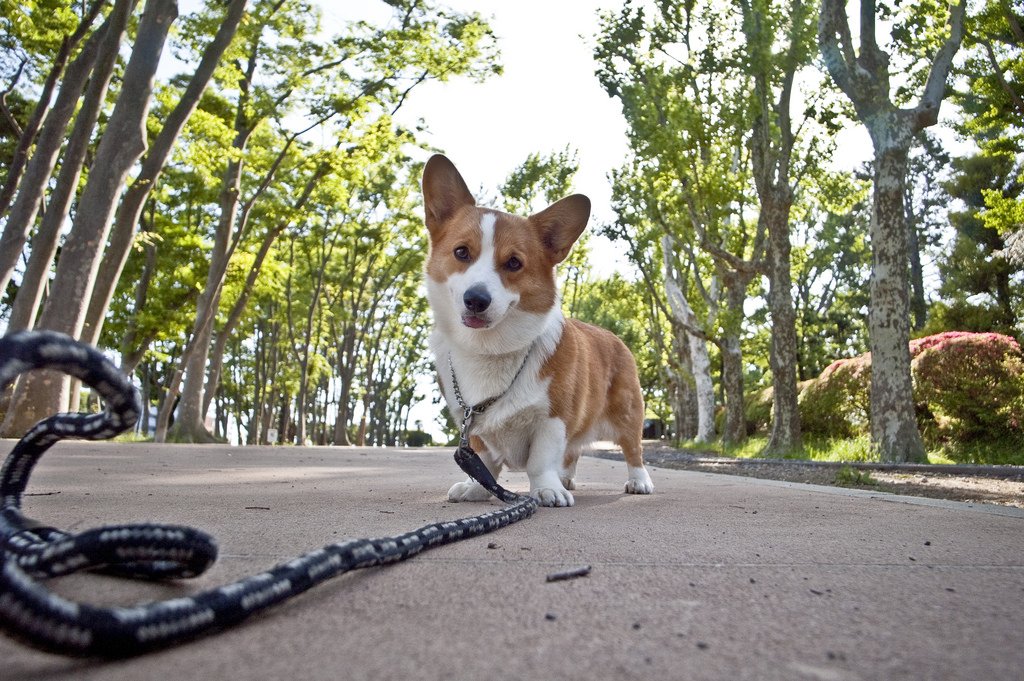
The history of the Welsh Corgi Pembroke breed goes back centuries. Excavating at the site of a settlement in South Wales at the turn of the VIII-IX centuries, scientists at Cardiff University, among other finds, discovered the bones of a small dog, very similar to parts of the skeleton of a modern corgi.
Written mentions of the breed are first found in the code of laws of the Welsh king, Hiwal the Good, who ruled in these parts in the 10th century. According to the provisions of the law, for the killing of a corgi grazing cattle, its owner had the right to demand from the culprit a whole ox as compensation for damage. It is interesting that for dogs of any other breed, even if they were the property of the king, no one gave more than a ram. The fact is that the Welsh Corgi grazed herds without human participation, accompanied the herd on their own, fearlessly protected it from wolves and robbers, that is, they worked for themselves and the owner. The death of such an assistant was indeed a very tangible loss.
According to one version, the ancestors of today’s Pembrokes were brought to the islands of Foggy Albion by the Vikings. Perhaps these were Lundehund, the resemblance to which lies not only in size but also in the special arrangement of the ears, which prevents sand and moisture from getting deep into the auricle. The corgi also has a lot in common with another representative of the Spitz – the Swedish Wahlund.
The main function of these pets in those days was a shepherd, and we are talking not only about flocks of sheep. Corgis also superbly looked after herds of ponies, and when the boom in breeding poultry (mainly geese and ducks) began in Wales, there was simply no better helper to accompany these very wayward birds to the city markets. Several dogs, working as a well-organized team, transported huge flocks of birds to their destination with almost no loss. It was also important that the representatives of the breed did their work without barking, did not irritate the bird.
Pembroke Welsh Corgi traces its history from the Welsh county of Pembrokeshire. This area is separated by the Cambrian Ridge from Cardiganshire, where the Cardigan Welsh Corgi comes from. Despite the similarity of names, these are still different dogs. Due to the isolated existence in certain mountainous regions and, as a result, closely related crossbreeding, for each of the breeds, features inherent only to this type of dog were fixed.
As for the meaning of the words “Welsh Pembroke” or “Welsh Cardigan” in the name of the breed, then everything is more or less clear. But the word “corgi” can be translated in different ways. Someone thinks that the word comes from the Welsh “cor” (to observe, to collect) plus “gi” (dog). Others interpret corgi to mean a cross or an angry dog. Still, others translate “cor” as “gnome, dwarf”.
The official debut of the breed at shows took place in England and dates back to 1925. Both species – the Pembroke and the Cardigan – were judged to be of the same breed until 1934, when the Kennel Club of Great Britain recognized them as completely independent from each other. In the same 1934, for greater differentiation of types, it was decided to cut off the tails of the Pembrokes.
The Pembroke Welsh Corgi has become extremely popular because they are the darlings of the British royal family. Back in 1933, the Duke of York, later King George VI, gave his daughters a little Pembroke. Since then, these wonderful dogs have become permanent residents of Buckingham Palace and even participate in official receptions, and Her Majesty Queen Elizabeth II of Great Britain is rightfully considered the world’s greatest lover and connoisseur of the breed.
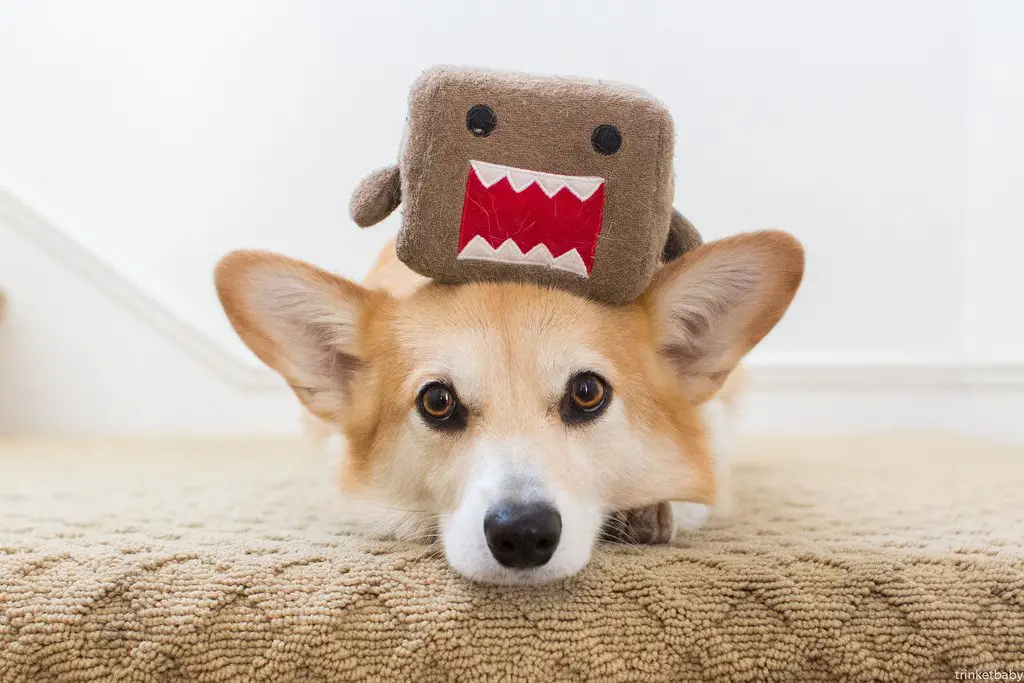
The Pembroke Welsh Corgi is a stocky, compact, and sturdy dog. The length of the body (from the withers to the base of the tail) is approximately 40% longer than the height from the withers to the ground (25-30 cm).
The weight of the animal is proportional to its height and is up to 12.7 kg for females and not more than 13.6 kg for males.
Show representatives of the breed should have a lower weight – about 11.4 kg and 12.4 kg, respectively.
The corgi’s head is shaped like a fox, the skull is wide enough and flat between the ears. The muzzle is proportional to the skull in a ratio of 3: 5, tapering slightly towards the nose. The transition from the forehead to the muzzle is moderate. The nose is always black.
The corgi has strong jaws with a well-defined regular scissor bite.
The eyes are small and round. The color of the iris is brown, in harmony with the color of the coat.
The ears are medium in size, pointed, with slightly rounded tips. A conventional line drawn from the nose through the center of the eye should cross the tip of the ear or go very close to it.
The case is average. The rib cage is rounded, slightly ovoid, and of moderate length. The top line is flat, with a possible slight depression at the withers.
The tail is short. The options are docked or natural. If the corgi’s tail is not docked, then it should be located in one line with the top, run low enough, and in no case be thrown onto its back.
The front pasterns of the Pembroke Welsh Corgi are short and as straight as possible. The bones are wide up to the paws, without narrowing. The elbows are close to the sides. The shoulders are harmoniously laid and are at right angles to the forearms. The hind legs are short and strong. The angles of the knee joints are good, the metatarsus is straight. Strong bones.
Feet are oval in shape with strong toes, the two central ones are slightly forward. The pads are firm and well filled. The nails are short.
The coat is straight with a good dense undercoat. It is never soft and wavy, nor is it wiry.
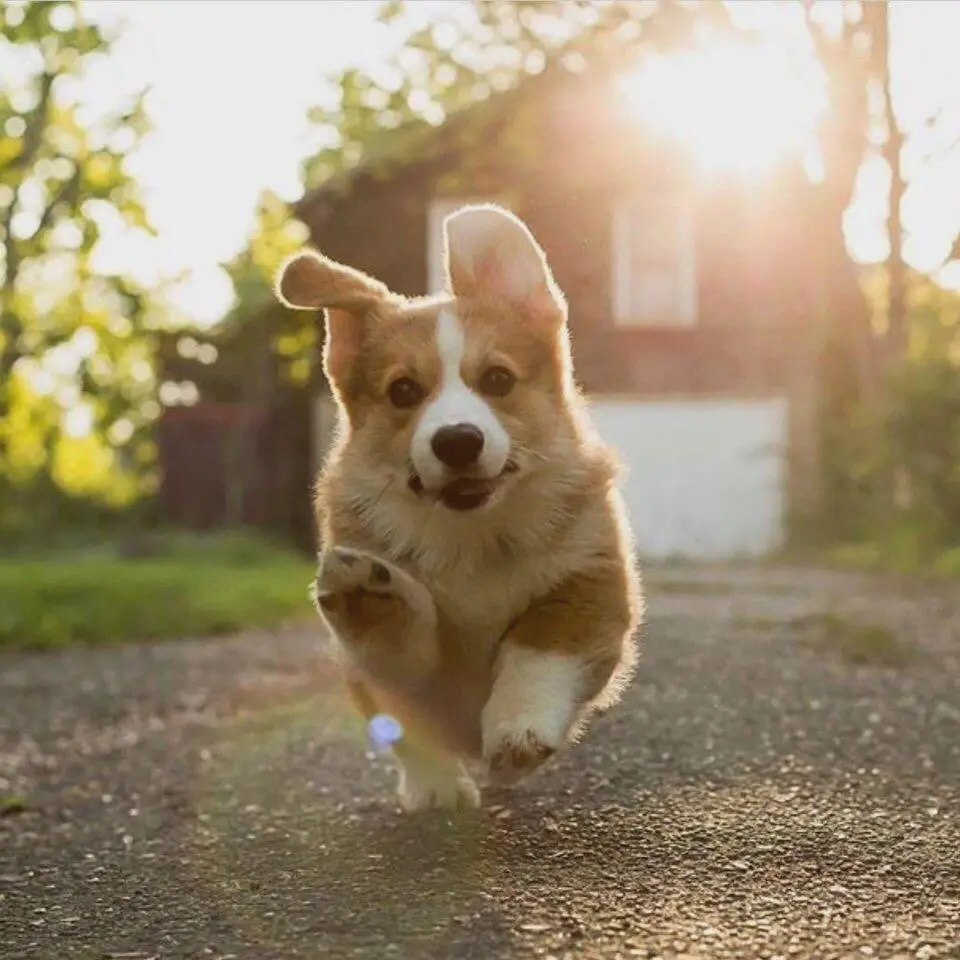
The color of the Welsh Corgi is red, light red, black, and tan with possible light markings on the chest, neck, and legs (tricolor), sable. The breed standard allows white markings on the head and muzzle.
The disadvantages of the Welsh Corgi breed include:
- wrong tail set;
- an overly deep chest that interferes with the movement of the animal, a barrel-shaped or flat chest;
- the high position of the dog’s hind or vice versa excessive slope of the topline;
- straight hocks, narrowly set limbs;
- aggression or fearfulness in character;
- any deviations from a free natural gait (mincing step, “prancing”, “waddling” step).
In males, two normally developed egg-shaped glands fully descended into the scrotum should be clearly defined.
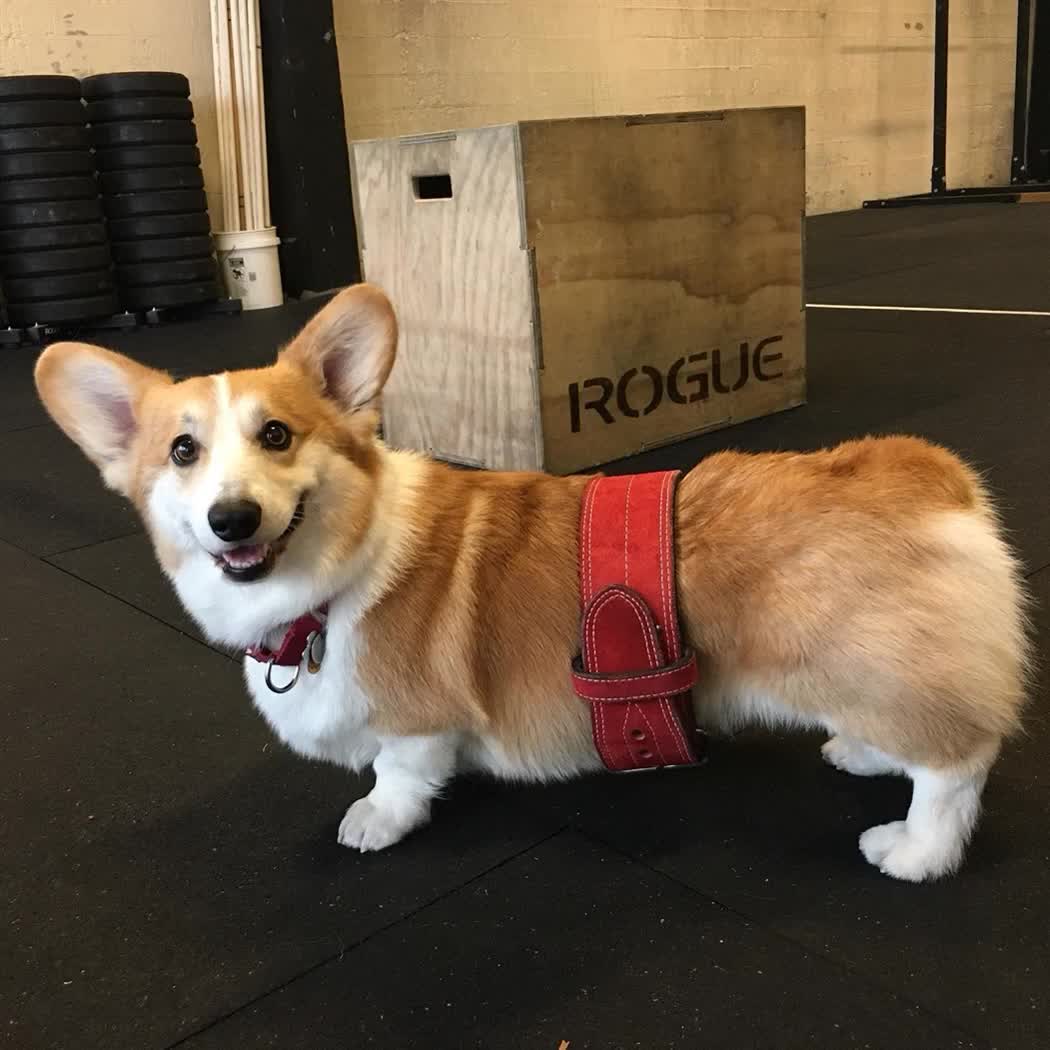
All owners of dogs of the Welsh Corgi Pembroke breed almost unanimously speak about the wonderful character of these small shepherd dogs. Among the main features are the activity of the animal, its high intelligence, and amazing friendliness to the representatives of the human race. If corgi can still afford to show some alertness and aggressiveness towards other dogs, then growl or bark at a person rarely.
Originally, the Pembrokes were exclusively herding dogs. This is an occupation that requires endurance, quick wits, and teamwork skills. Many people are sincerely surprised by the very high activity of the corgi, which loves to run, frolic, and even have fun fooling around, despite its seemingly not entirely conducive to such a pastime appearance. Neither modest size nor short legs hinder him in this lesson.
Pembroke Welsh Corgi are dogs that can truly enjoy life. It seems that these cute dogs simply do not know what blues and bad moods are. Communication with the owner walks and even work – everything gives the dogs pleasure. Their smiling face, full of enthusiasm and optimism cannot leave anyone indifferent.
A social creature like the Pembroke still needs to be looked for. They do not just love the owner and strive to be near him. They want to be with their person always. Whatever you do, your pet will be there. Dogs of this wonderful breed have one interesting feature – they like to touch the owner with their paws or nudge them with their nose. The Welsh Corgi sits down next to you and gently touches you several times in a row with a short interval of time as if hinting that there is simply no more interesting activity than talking to such an extremely attractive and intelligent dog. However, if you do not respond to these signs of attention, the beast will understand (not the fact that right away) that he will have to wait. Fearing to miss the moment when the owner is free, the Pembroke will languish from loneliness and forgetfulness, lying down at your feet.
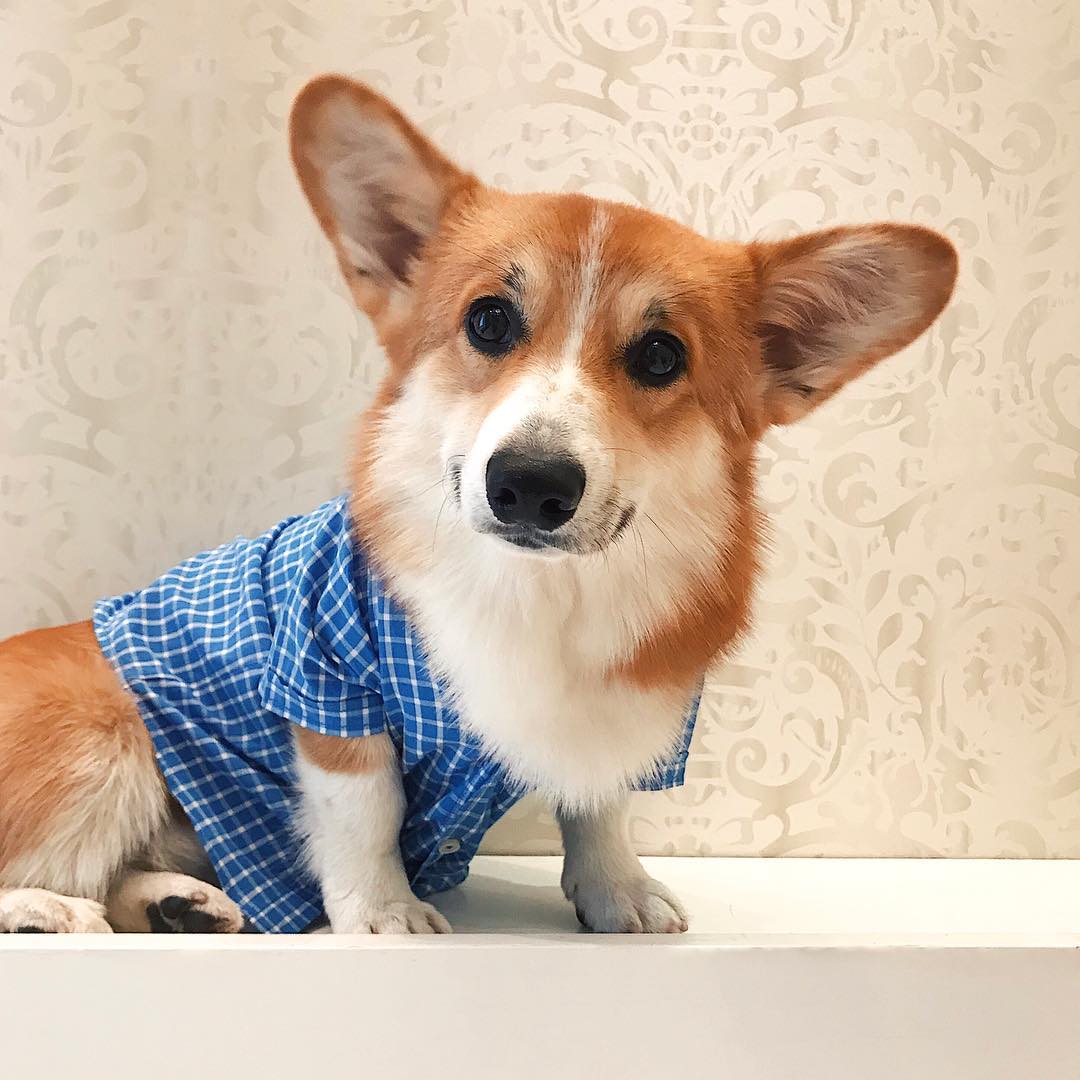
Corgis are very fond of children. They stoically endure all manifestations of childish delight and intense games. No matter how active they were bumped, kissed, squeezed, the animal will never show even the slightest hint of aggression towards the child.
Welsh Corgi consider themselves obliged to be aware of all the events happening around them. This dog will even try to choose a place to sleep in the middle of the room or right on the aisle so that if something happens, he will be right there.
Shepherd’s work has developed another characteristic feature of this breed – fearlessness. If the ancestors were not afraid to engage in battle with wolves, then your pet, without any hesitation or hesitation, will rush into battle even with an enemy that is much larger in size.
Pembrokes are surprisingly talkative, they express their emotions not only by barking and whining. Corgis are good singers (though not all). If they are overwhelmed with positive feelings, then a kind of roulades in different versions can last for a long time. Those who have been deprived of vocal talents by nature are manifested with the help of a variety of sounds: grunting, “grunting”, squealing and even muttering. They do this so expressively that the owner has no other choice but to enter into a dialogue with his pet.
It is difficult to distinguish a Pembroke from a large dog by its voice. Welsh corgi bark loudly and at low notes, which is not entirely consistent with their small size.
The instincts of this dog require that all living things surrounding him be controlled, organized, and move only in the right direction. It is from here that the Pembrokes, especially young people, have a habit of biting people from behind on the legs and heels. In the absence of geese or sheep, the role of “wards” is determined by the members of your family who will have to endure such manifestations of the character of the breed. It is not difficult to wean a pet from this habit, you just need to show consistency and perseverance.
Pembroke Welsh Corgis love to eat. This is also genetically incorporated. Shepherd’s work required a lot of energy, and it was possible to restore them only by having a solid snack. Modern dogs have fewer worries, but the love of food has remained the same, so the Welsh Corgi will never give up an extra bite, it is another matter that overeating in the absence of active work will negatively affect the dog’s health, primarily the spine.
With all the common features, each pet has several individual characteristics. Someone is calmer, someone is more playful, someone is more hooligan than their relatives. But whichever dog you get, you can be sure: your Pembroke will grow up to be a loyal, intelligent and courageous friend!
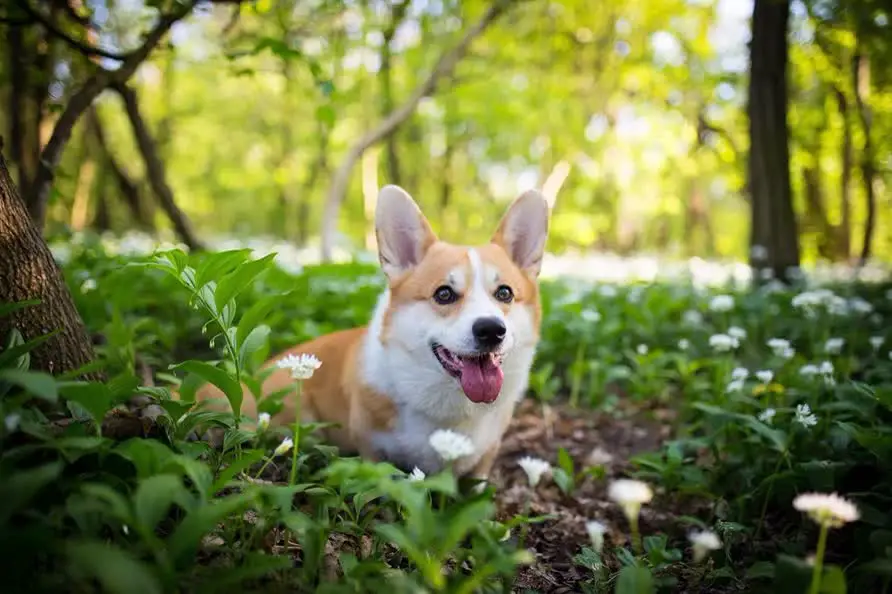
Looking at this small dog, it may seem strange to recommend referring to the literature on raising and training a German Shepherd. Experienced dog handlers claim that these breeds have very similar psychological portraits.
Before you bring your baby home, do the following:
- remove shoes in places inaccessible to the puppy;
- try to hide electrical wires, internet and telephone cables behind furniture, pack in boxes or under skirting boards;
- roll up carpets, because it is easier to remove a puddle or a pile from the floor;
- stock up on enough toys and materials that your dog can chew on without harm to health.
Until the dog understands what is good and what is bad, some time will pass, and such precautions will not be superfluous at all.
The main principle in the upbringing of the Pembroke Welsh Corgi is categorical and consistent. Once something forbidden should not be allowed later.
As for the rules of training, they are quite simple. No special technique was developed for these dogs since they are naturally intelligent and quick-witted. First of all, the puppy must be taught to respond to his own nickname. Call the Pembroke to you more often, talk to him, calling my name. All your household members should do the same.
Since the training process is perceived by the corgi as a game, the tone of communication with the puppy should be team-playful. It is very important to choose the right intonation for this or that team.
“To me!” is pronounced at first only with the name of the dog and is accompanied by a pat on the hip or squatting. Do not give the command too harshly, it is better to do it in a drawn-out manner.
The command “Place!” suggests a clear intonation with a tinge of threat. The name of the dog is also necessarily pronounced, and the puppy must be delivered to a certain place, which should be chosen in advance and not changed during the training process.
The command “Come to me!” can be served only sometime after the command “Place!”.
Very quickly the Pembrokes master the execution of the command “Bring!” Holding the puppy by the collar, drop the toy, give the command and release the puppy. He should definitely give you the item. To do this, show your pet your favorite treat by holding it in your hand. At first, the corgi will perceive this as a mutually beneficial exchange, but very soon it will follow the command just for fun.
Be sure to praise your pet, even if it does not work out well at first. Patience, perseverance, and love are the ingredients of success.
Specialized training courses, if necessary, it makes sense to start when the corgi reaches four months of age. It is better if a professional will help you with this.
Even though the Pembroke Welsh Corgi is a rather expensive breed, you will not find any particularly difficult requirements for caring for it. There is practically no characteristic smell from these dogs, so bathing is often not required. True, given that the dog is short-legged, it will not be possible to avoid water procedures in rainy weather. For bathing, use only special high-quality shampoos, and do not forget to thoroughly rinse the remaining detergents from the wool. To make the corgi less dirty, many owners buy special overalls.
From hygienic procedures, it is important not to forget to cut your pet’s claws at regular intervals (at least once a week). During the manipulation, do not forget to cut the hair between the toes. Also, keep your dog’s ears clean and clean them as they become dirty.
Caring for your coat is extremely simple. The Pembroke Welsh Corgi sheds twice a year, at this time try to brush the dog thoroughly every day. At other times it is enough to brush the dog occasionally.
In terms of diet, many breeders suggest opting for premium dry food. If you decide to give preference to natural products, then it should be remembered that the main task is to provide your pet with a balanced diet. The diet must include meat products (except for poultry), cereals, eggs (at least twice a week), low-fat cottage cheese. It is better not to use legumes (lentils, peas) and pearl barley for feeding corgi. Remember to include vegetable dishes in your pet’s diet. It is unnecessary to remind you about the constant availability of clean water.
Animals quickly get used to any living conditions, be it a small apartment or a country house. They have a good thick undercoat that protects from the cold in winter and from the heat in summer, but this does not mean at all that you can keep the Pembroke Welsh Corgi in a booth outside. This is still more of an indoor dog breed, and she should be in the house.
If you live in a city apartment, try to provide your pet with good physical activity.
Setting up a dog’s place is easy. For this, any unnecessary pillow is suitable, on which you can put on a pillowcase and change it as it gets dirty. If this option does not suit you, purchase a special house for your pet at the pet store.
Keeping in mind the natural activity of the corgi, buy enough toys for your pet.
When buying a Pembroke, be prepared to devote as much of your time to him as he needs it so badly.
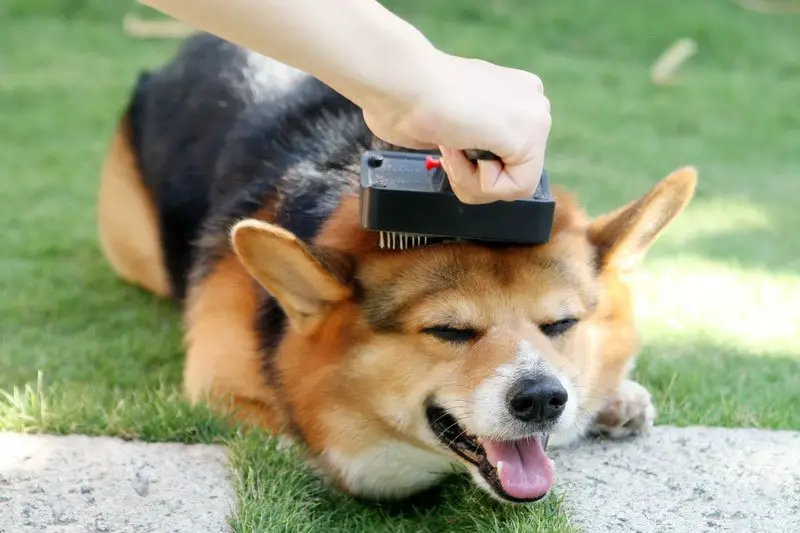
The Pembroke cannot be classified as a pampered breed suffering from numerous diseases. This is a sturdy working hardy dog. If you vaccinate your pet promptly and in full and regularly visit a veterinarian, then there will be no special health problems.
However, animals still have several “weak links”. Dogs of this breed often have problems with the eyes and ears, so preventive visits to the doctor are necessary. As a child, Pembroke Welsh Corgi sometimes suffer from narcolepsy. This is a rare disease, which manifests itself in the fact that the dog suddenly falls asleep for no reason. The main thing at this moment is to protect the baby from sharp loud sounds.
Another risk area is the back. Corgi is a short-footed dog and quite long, so problems with intervertebral discs are possible. Try not to let your pet jump from a height to the ground. Anyway, any jumping is not for this dog. His element is running.
Pembrokes are very fond of food. To avoid any health complications due to obesity, monitor the diet of your corgi and control physical activity.
Another common problem for Welsh is hip dysplasia. This disease is inherited, therefore, it is necessary to monitor the condition of the joints from an early age.
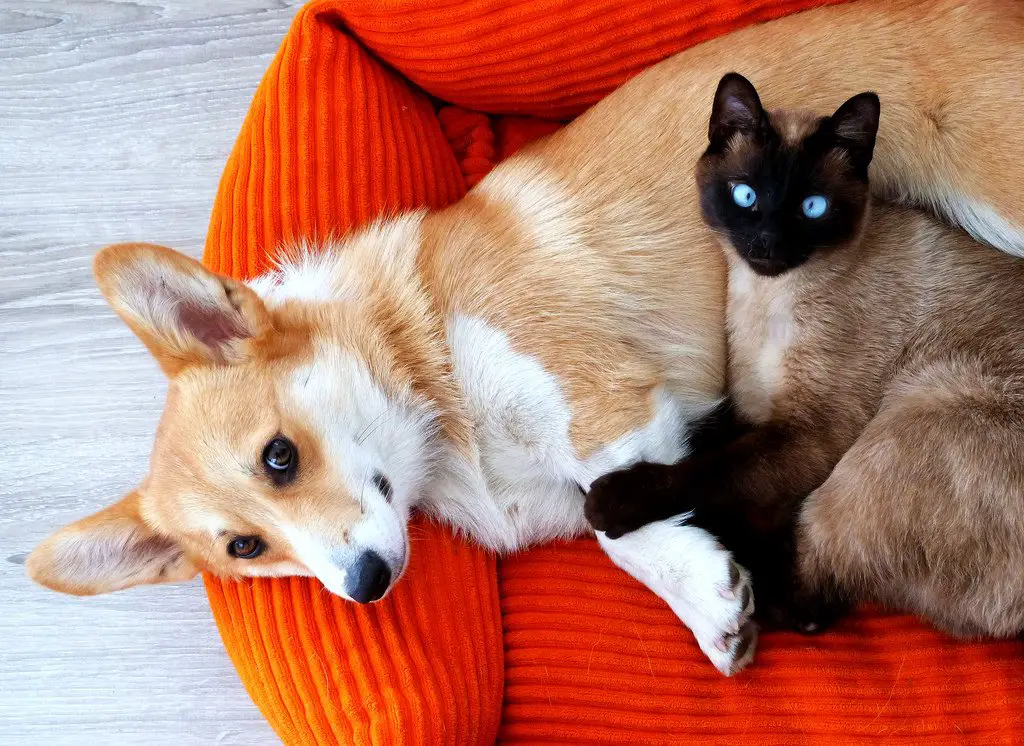
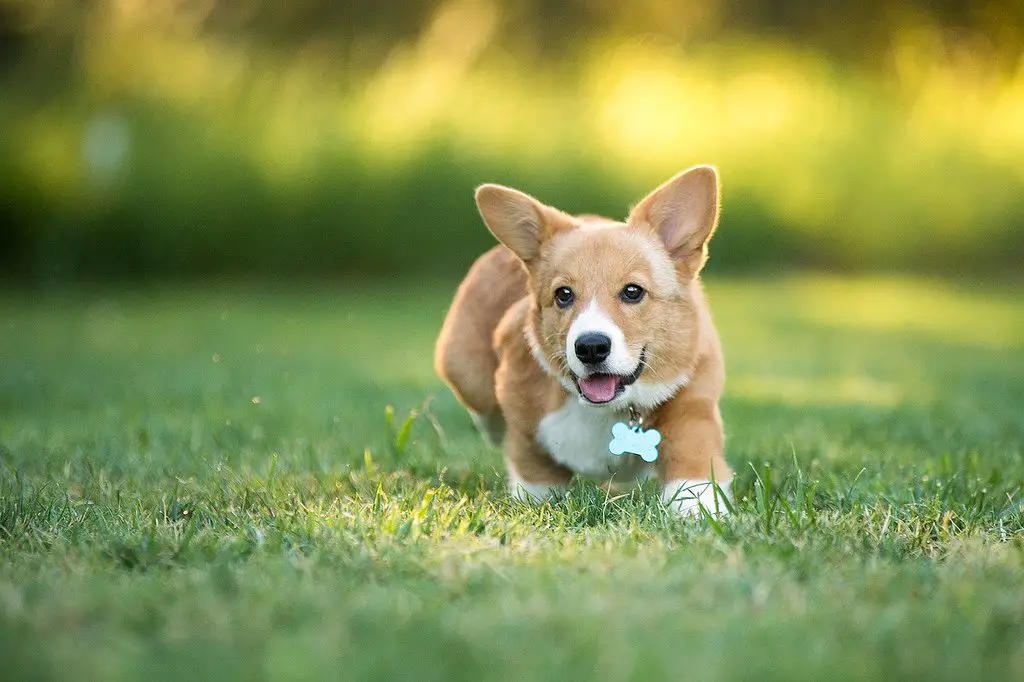
How to choose a puppy?
If you have opted for the Pembroke Welsh Corgi breed, then to buy a healthy and strong puppy that would meet the breed standard, follow the basic rules.
Buying a pet in the poultry market is a priori failure. Buying welsh online is just as dubious. There is only one way out – contact a well-known breeder or a nursery that breeds this particular breed.
Bearing in mind that the Pembroke is a dog breed where 75-80% of the hereditary traits (health, character, appearance) the puppy receives from the mother, buy a small corgi from a well-established female
Be sure to pay attention to the temperament and character of the baby. The puppy should be funny, curious, and even somewhat intrusive, he should be interested in everything.
A purebred dog must necessarily have a puppy card indicating the organization under whose jurisdiction the breeder or nursery selling you the animal falls. In addition, there must be a veterinary passport with notes about all vaccinations carried out.
When choosing a puppy, pay attention to the conditions in which his parents are kept, ask about their achievements in a show career, lifestyle (apartment or suburban maintenance).
It is better to acquire a baby who was born as a result of the planned mating.
Concerning external signs, then:
- you should not be embarrassed that the ears of a one and a half-month-old corgi may not yet stand – they will certainly take an upright position after a while;
- the eyes of a Pembroke baby are always dark in color and rounded;
- the expression of the muzzle should be mischievous and sly – “fox”, which is very much appreciated in the breed;
- in males, especially if they are planning to breed, at the age of 45 days both egg-shaped glands are already well defined in the scrotum.
Another pressing question, who to choose – a boy or a girl? In character, temperament, and intelligence, you will not find a difference. Physiological differences will require you to take a different approach to the conditions of keeping a female or dog over time.
When you first meet a corgi, you should feel like this is your puppy. And even if it is the last in the litter, buy it without a doubt. He is the last, not because he is bad, but because he was waiting for you.
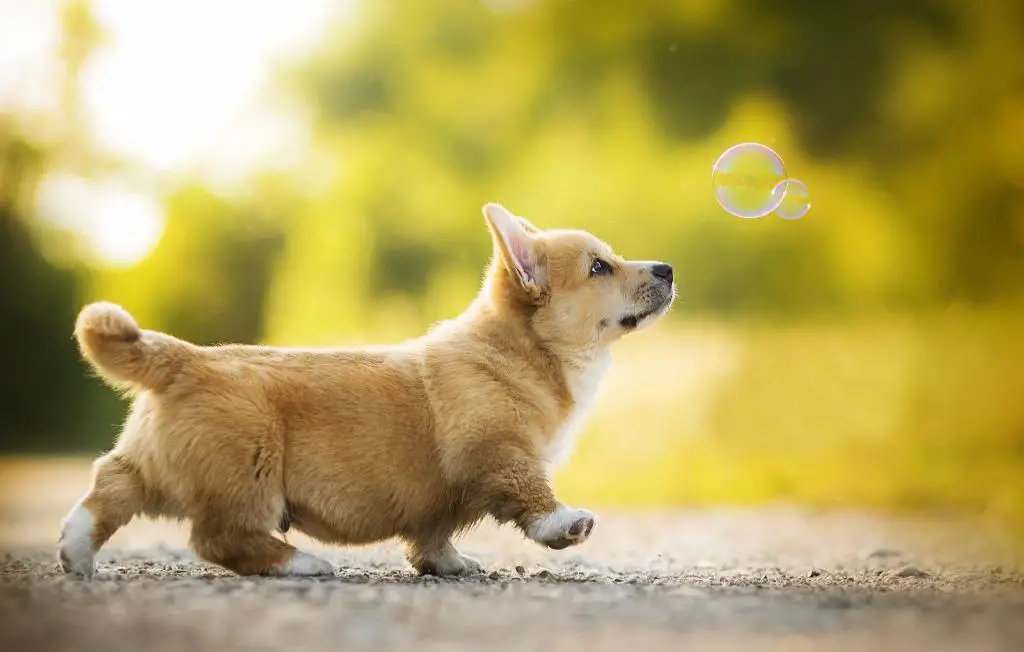
The cost of a Welsh Corgi Pembroke puppy is directly dependent on the purity of the breed, health, and prospects. The price for a girl will be higher than for a dog.
When planning to purchase a representative of this particular breed, decide for what purpose you want to buy this wonderful dog. In any case, whether it is a pet-class puppy or an elite baby, you will never regret your decision, because the Pembroke Welsh Corgi is first of all a kind, intelligent, cheerful, and devoted friend.
